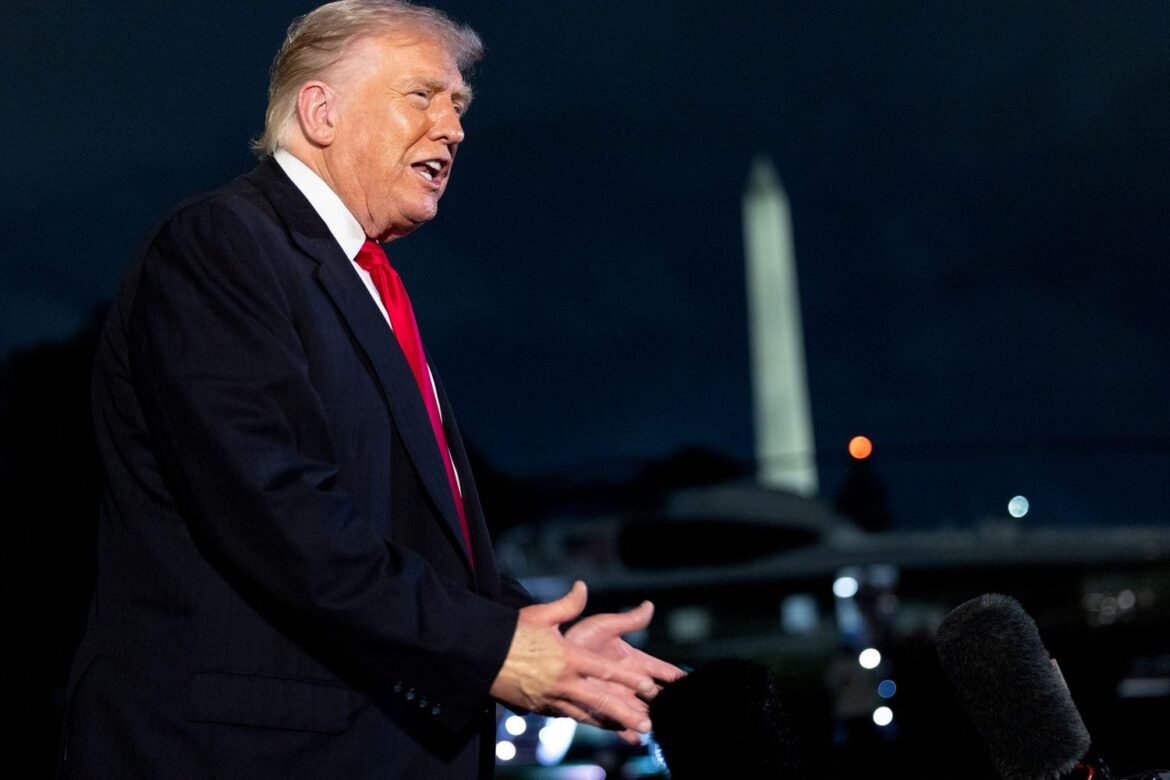Key Takeaways
- President Donald Trump proposed sending $2,000 checks to low and middle-income Americans as a “dividend” from the import taxes he raised this year.
- The tariffs have not raised enough money to cover the estimated cost of those checks, according to one analysis.
- Treasury Secretary Scott Bessent said the real dividend from the tariffs may be the tax cuts taking effect next year.
You may wait to wait to spend President Donald Trump’s $2,000 tariff dividend until you have a check in hand.
Trump proposed the new payments, to low- and middle-income Americans, in a weekend post on social media. Some experts, however, have questioned the math behind the idea, and a senior member of his administration suggested that the “dividend” may come from tax cuts passed in July, rather than any new policy.
“We are taking in Trillions of Dollars and will soon begin paying down our ENORMOUS DEBT, $37 Trillion. Record Investment in the USA, plants and factories going up all over the place,” Trump posted on social media Sunday. “A dividend of at least $2000 a person (not including high income people!) will be paid to everyone.”
What This Means For Your Finances
President Donald Trump’s proposed $2,000-per-person dividends face major obstacles to becoming reality. You might not want to spend the money before the check is cashed.
Trump doubled down on the idea Monday, saying his import taxes are raising enough money to send out the $2,000 payments with enough left over to reduce the national debt.
“All money left over from the $2000 payments made to low and middle income USA Citizens, from the massive Tariff Income pouring into our Country from foreign countries, which will be substantial, will be used to SUBSTANTIALLY PAY DOWN NATIONAL DEBT,” he wrote.
Do the numbers add up? Erica York, vice president of tax policy at the Tax Foundation think tank, estimated the proposed rebate would cost $300 billion, assuming the $2,000 checks went out to adults making under $100,000 a year. The tariffs, meanwhile, have brought in $120 billion in revenue so far.
They also haven’t been a pure positive for the federal budget, York said, since tariff costs have led some companies to reduce spending on other things, pushing down the revenue the government collects from other taxes. Each dollar of tariff collected reduces payroll and income taxes by 24%, according to the Tax Foundation, which estimated based on a model used by the Joint Committee on Taxation. Taking that into account, federal revenues are only up $90 billion, less than a third of the estimated cost of the rebate checks.
The rebate idea may run against the stated purpose of the tariffs. A Trump administration lawyer last week argued that the tariffs are not taxes and are not intended to raise revenue. Trump has said the tariffs are mainly intended to revive American manufacturing.
Treasury Secretary Scott Bessent suggested in a TV appearance on Sunday that Trump’s dividend idea didn’t represent a new policy, but rather the amount people can expect to save from the series of tax breaks Congress passed in July, which take effect next year.
“The $2,000 dividend could come in lots of forms, in lots of ways,” he said on This Week on ABC. “It could be just the tax decreases that we are seeing on the president’s agenda. You know, no tax on tips, no tax on overtime, no tax on Social Security, deductibility of auto loans … Those are substantial deductions that are being financed in the tax bill.”
It was unclear on Monday whether Congress would support rebate checks. Republican Senator Josh Hawley in July introduced legislation to send out $600-per-adult tariff rebate checks, but it has not been voted on.
Trump in February proposed sending rebates based on savings from the DOGE cost-cutting task force. The DOGE only found a fraction of the savings it promised, and the checks never went out.



